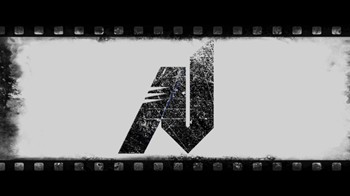Hello readership everywhere! Today, we return with a new installment of the AndersonVision interview. We’ll split our focus into two sections today for clarity. The first section was our extended interview with the writer/director of Journey to Space. The second part is a follow-up with the documentary’s producer. Journey to Space will mark Shout Factory’s first bow into the 4K market when it releases this Tuesday (June 7th, 2016).
Mark Krenzien, Writer/Director of Journey to Space:
ANDERSONVISION:
What do you think the 4K Revolution will do for documentaries on the home video level?
MARK KRENZIEN:
The simple fact that even the most low budget documentaries can now be captured with the same resolution as any high end feature film or TV drama means that the audience can enjoy and judge documentaries more on their storytelling impact and not place documentaries in a subclass of technically grungier filmmaking. For giant-screen documentary filmmaking, 4K and higher digital capture means our films are no longer limited by the ponderousness of only using noisy 150 lb. cameras that hold only 3 minutes of film.
AV: Was NASA cooperative in helping with this documentary?
MK: NASA was very cooperative in allowing us access to both their facilities and key personnel. Still their primary goal is to develop new space exploration vehicles and get people into space, so our filming definitely had to fit within very narrow windows of opportunity.
AV: Why the focus on the ISS (International Space Station)?
MK: For two reasons: First, there is so much brilliant historical footage of the the ISS and its construction, and second, it is clearly the necessary tool to get humans still deeper into space.
AV: Did you have any direct influence in shaping Patrick Stewart’s narrative? How did that situation come to pass?
MK: We wanted the film to have a narrator that had a definable connection to space exploration, so we were smiling when Star Trek’s Patrick Stewart agreed to be the film’s key voice. As Writer/Director I had written all of the narration, but I immediately made it clear to Patrick that I was open to all suggestions that he might have as we recorded. Knowing that every word was not carved in stone, let Mr. Stewart make a number of subtle improvements of both content and inflection. I was especially impressed when he suggested changing the very last two words of the film from my tongue-twisting “unimaginable possibilities” to the much more concise and expressive “unimagined possibilities.” It was a small but clear example of how collaboration can make a creative effort better.
AV: Describe what lead to the Mars landing scenario. I found that section to be the most thought provoking.
MK: I created the Mars landing sequence based on what NASA has broadly defined as the 5 key spacecraft needed to get humans to and from Mars. I really wanted to show the audience that we currently have the technology to get to and from Mars—it just needs to be refined and executed. So based on prototype drawings from NASA and other private space companies, I was able to let the super special effects designers at FRIMA ( a Canadian visual effects company) go wild from my simple storyboards but still stay within the realm of what that very first mission will look like.
AV: What are you working on next? Do you have any links that you wish to share?
MK: I am working on another giant screen documentary titled Cool Planet that will profile key cities and visionaries around the world who are moving right now to build sustainable communities without waiting for outside mandates.
and the second part!
Ryan Mullins, Producer Journey to Space
ANDERSONVISION:
What do you think the 4K Revolution will do for documentaries on the home video level?
RYAN MULLINS:
I would like to focus my answer on what it means to IMAX documentaries since this my wheel house. I would however say that the answer would be also meaningful for any documentary that is viscerally driven with beautiful imagery. If you start your analysis twenty years ago you had the contrast of .25 K VHS video trying to represent 15/70 IMAX film imagery, which is often regarded as the equivalent of 18K. DVD made some headway by offering surround sound that could do a decent job in the home of an IMAX 6.0 in 5.1. The picture was better but not great. HD improved things more but with the arrival of UHD 4K and HDR and Dolby Atmos, we have never been closer to recreating the IMAX experience in the home. For this reason I am very excited about the format being a way for more and more people to see an IMAX film outside of the somewhat limited theatre network in a way that comes close to doing the film justice and immersing the viewer in the visceral experience that is the hallmark of all of our films.


